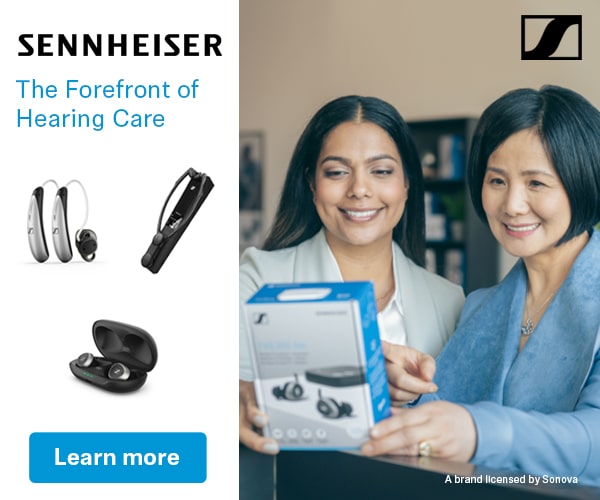A previous post described Baumol’s “cost disease” as a metaphorical affliction of personal services ranging from hair care to audiology, all requiring face-to-face service delivery.
In his book on the topic, Baumol identified the wage market conundrum facing audiology practices that dispense manufactured devices, using an illustrative example of 2% wage increases across the board:
If manufacturing wages rise by 2%, they are offset by increased output per worker; in contrast, a 2% wage increase for healthcare workers is not offset by higher productivity and therefore must lead to price increases. (paraphrased, p 21)
The first post nominated Baumol as the “first unbundler”. He noted “appropriate market pricing behavior” tied to divergent cost signals for goods, which decline as technological innovation reduces labor required, versus services, which continue to consume about the same of labor as in the past Just as Baumol posited that the market is well-behaving, he also concluded that the cost disease divergence of product versus service is not only here to stay but will increase over time as goods’ cost goes down and service costs rise with demand and inflation.
Thus, hearing healthcare providers and the practices that employ them suffer from Baumol’s cost disease, a chronic but not fatal condition which is paradoxically and integrally tied to growing wages and increasing demand for hearing healthcare services.
Given the diagnosis, it only makes sense for practices to pluck out and price their services separate from devices, just to keep up with their payrolls.
Illness as Practice Metaphor
Any and all successful private practice audiology owners and managers have a gut feel for how productivity themes manifest in their practices.
- As entrepreneurs, we benefit from manufacturing productivity improvements by experiencing a reduced cost of goods on average and over time, and have the opportunity to purchase newest innovations at higher cost in our efforts to gain a competitive edge in our retail markets.
- As employers, we expect labor costs to increase along with cost of living increases, and they have done so. We may also see increases due to competitors or shortages of qualified labor in the audiology market.
- As practice managers, we note that audiology services consume about the same amount of time now as in the past, irrespective of better devices, computer software, or increasing labor wages. In other words, productivity isn’t improving but wages are going up.
- As business managers, we do the math and conclude retail price must go up to cover the increasing cost of labor, though not cost of goods, which is staying fairly steady or dropping, depending on our fitting choices.
- As marketers, we note that market demand falls as price rises; also that price is falling for high ticket goods with increased competition, changing distribution channels and regulations (e.g., Internet and OTCs)
- As accountants, we see at least the threat of reduced sales and/or lower margins on the horizon, if not already on the books. For sure, we see payroll rising or future layoffs.
- As diagnosticians, we integrate what we hear and see to ID illness in our practices, either present or pending.
- As treatment and rehab specialists, we face hard decisions for the future health of our practices. The radical treatment option is to go for a cure by upending the business model (e.g., self fitting hearing aids). Less radically, and therefore more likely for now, we can opt for continuous treatment of a chronic condition. This boils down to maintaining or even expanding professional staff while encouraging them to do what they’re trained and licensed to do, but better and faster. Inevitably, that treatment choice means raising prices and reducing margins to ensure practice survival. Somewhere in between the cure and chronic treatment choices lies the decision to unbundle device from services and figure out ways to support the model.
- As educators, we are obligated to explain and support practice changes so that patients and employees have an understanding, if not an appreciation, of why procedure, price and wage changes are necessary.
Baumol Had a Solution but It’s a Hard Sell
The personal service cost disease is chronic, incurable, but not fatal according to Baumol. To his thinking it was all about educating ourselves, our employees and consumers to an economic idea that is logical but far from intuitive. Next post will discuss his and other workable solutions when it comes to managing chronic disease in our profession and practices.
 Holly Hosford-Dunn, PhD, owned and operated a dispensing audiology practice in Tucson and was active in management of HearingHealthMatters.org through 2017. She holds BA degrees in Communication Sciences, Psychology and Economics; MA in Communication Disorders; PhD in Hearing Sciences. Following post-doctoral work at Max Planck Institute (Munich, DE) and Eaton-Peabody Auditory Physiology Lab (Boston), she joined the Stanford medical school faculty as director of audiology. She has authored/edited numerous text books, chapters, journals, and articles and taught Marketing and Practice Management in a variety of academic settings. She continues to consult and write on topics related to hearing health care vis-à-vis consumer demands, professional training, technological advancement, capital investment, industry consolidation, regulatory control, product and service distribution, and strategic pricing.
Holly Hosford-Dunn, PhD, owned and operated a dispensing audiology practice in Tucson and was active in management of HearingHealthMatters.org through 2017. She holds BA degrees in Communication Sciences, Psychology and Economics; MA in Communication Disorders; PhD in Hearing Sciences. Following post-doctoral work at Max Planck Institute (Munich, DE) and Eaton-Peabody Auditory Physiology Lab (Boston), she joined the Stanford medical school faculty as director of audiology. She has authored/edited numerous text books, chapters, journals, and articles and taught Marketing and Practice Management in a variety of academic settings. She continues to consult and write on topics related to hearing health care vis-à-vis consumer demands, professional training, technological advancement, capital investment, industry consolidation, regulatory control, product and service distribution, and strategic pricing.







